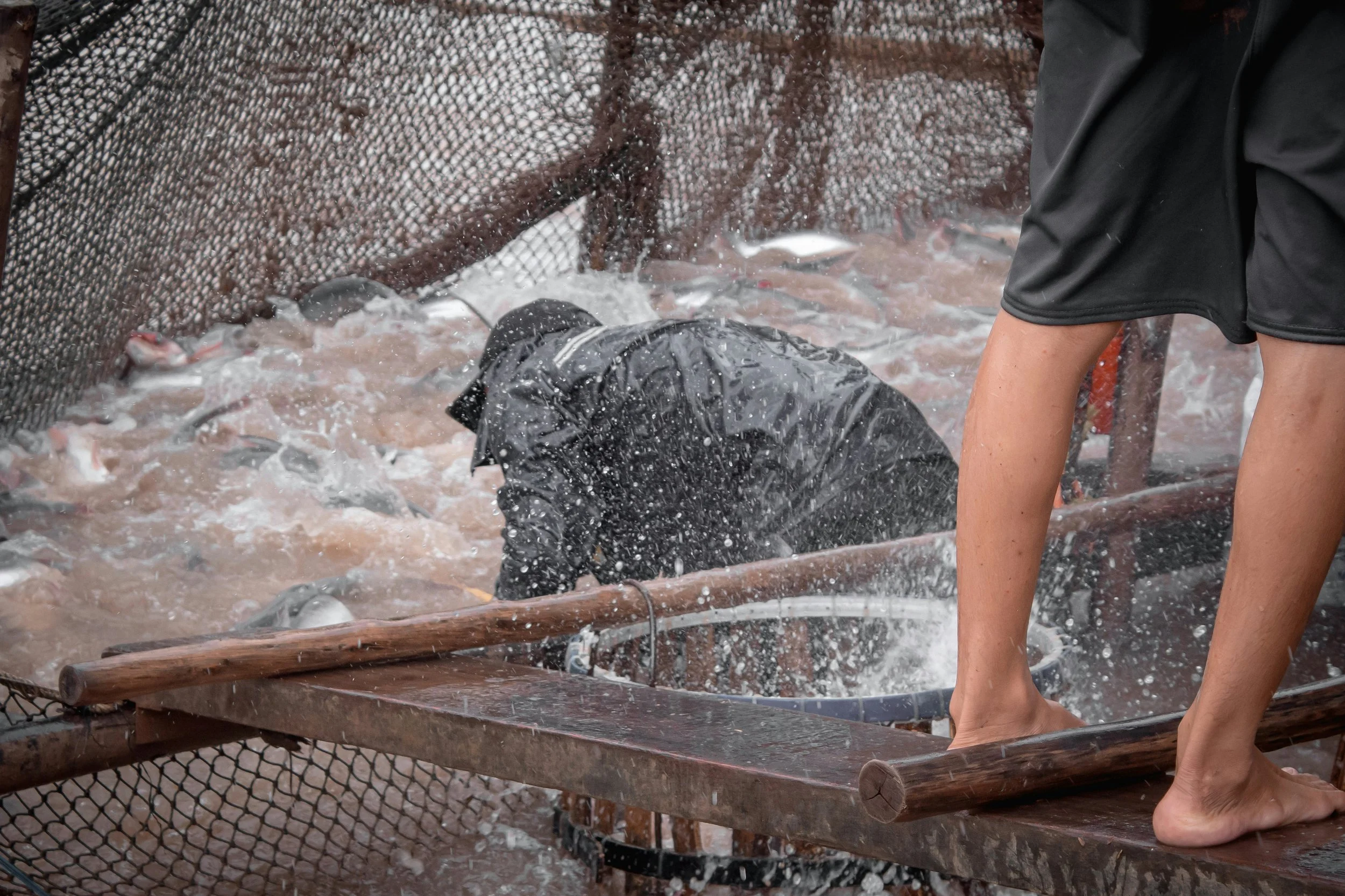The Farmed Fish Illusion: Why “Sustainable” Doesn’t Always Mean Healthy or Humane
When I got married at a renowned eco-luxury resort, I expected every detail to reflect mindful, elevated living. But when I looked at the menu and saw farmed fish advertised as “sustainable,” my stomach turned.
Wait, what?
How did one of the most ecologically conscious destinations end up serving a food that’s so damaging—to both human health and the ocean- and resort to labelling it with a word that casts a smokescreen over its realities?
What’s Really Going On with Farmed Fish?
Aquaculture—the farming of fish in confined net pens or tanks—has exploded over the last 30 years. Today, farmed fish account for over 50% of all seafood consumed worldwide. It’s being marketed as a solution to overfishing and a sustainable way to feed the planet. But beneath the surface, the reality is murky at best.
Let’s break it down.
Farmed Fish Are Not Raised in Clean, Natural Environments
Fish farms, especially open-net pens in the ocean, are eerily similar to factory farms for livestock. Imagine thousands of animals trapped in cramped, filthy conditions—except underwater.
No room to swim or behave naturally, leading to stress and injury
Fed unnatural diets made from GMO soy, corn, and rendered animal byproducts—not marine organisms, OR fed wild caught fish putting pressures on this already pressured stock
High disease rates (like sea lice and fungal infections) due to overcrowding
Heavy use of antibiotics and antifungals to prevent outbreaks—not because it’s ethical, but to preserve profits
Waste and Disease Don’t Stay Put
In nature, fish feces serve a regenerative role in the ecosystem, fertilizing seagrass and nourishing microbial life. But in farms, where fish are unnaturally crowded and confined, waste accumulates far more rapidly than the environment can process. And unlike the open ocean—where wild fish swim across vast distances, dispersing waste as part of a balanced nutrient cycle—farmed enclosures concentrate feces in one place, leading to oxygen depletion, algal blooms, and dead zones.
Feces, uneaten feed, and chemical runoff pollute the seafloor, altering ecosystems and smothering coral
Disease and parasites spread from farms to wild populations, disrupting migration and breeding cycles
Escapees from farms (especially genetically modified species) interbreed with wild fish, weakening the gene pool
It’s a self-perpetuating ecological time bomb, hidden beneath words like “sustainable,” “clean,” and “fresh.”
Healthwashing and Greenwashing: Don’t Be Fooled by the Labels
This isn’t just an environmental issue—it’s a human health issue, too. And the marketing? It’s incredibly misleading.
Here’s what we’re up against:
“Sustainable” is not a regulated term. It can mean anything—or nothing at all (so much more on this here!). Different certification schemes have their own standards, leading to variability in what "sustainable" entails. While certifications like the Marine Stewardship Council (MSC) and Aquaculture Stewardship Council (ASC) have established criteria, the term itself isn't uniformly regulated, allowing for inconsistent usage across products.
“Farm-raised” often implies better conditions, but many fish are raised in offshore net pens with inconsistent oversight. Aquaculture is a common method for farming species like salmon. These open-net systems allow for the free exchange of waste, chemicals, and parasites between the farm and the surrounding environment, posing risks to local ecosystems. While there are regulations in place, enforcement and oversight can be inconsistent, leading to environmental concerns.
Antibiotic residues, heavy metals, and persistent organic pollutants (like dioxins and PCBs) are more concentrated in farmed fish than wild-caught. (However, it's important to note that contaminant levels can vary based on farming practices, feed composition, and environmental conditions.)
And then there's the fish feed itself: often made from wild-caught fish, meaning farmed fish don’t even reduce pressure on wild stocks. In some cases, they increase it.
Why I Choose Wild-Caught—Or None at All
After reading studies on the disastrous health and ecological consequences of fish farming (some of which are now scrubbed from mainstream visibility), I made a decision: I no longer eat farmed fish. Full stop.
Yes, I understand that wild fisheries come with their own issues—bycatch, overfishing, habitat damage. But the answer isn’t to replace one flawed system with a greenwashed one. It’s to push for better regulation, transparency, and respect for food ecosystems.
When I do eat fish, which is rare these days, it’s wild-caught, traceable, and ideally local.
Take Action: Vote with your Wallet
Sustainability isn’t a label. It’s a lifestyle—and a responsibility. When it comes to seafood, we need to dig deeper than the menu or the marketing. The glossy language might soothe your conscience, but it doesn’t tell you what’s really on your plate.
We have to raise awareness.
We have to demand better.
We are the David up against Goliath—the powerful lobbies and the agencies they’ve influenced. But we’ve seen what happens when we band together. When we share what we’ve learned, speak up on social media, and—most importantly—advocate with our wallets.
Want to know where to start? Follow me at @fastinginparadise.com for my best tips, tricks, and ways to heal your body naturally.








